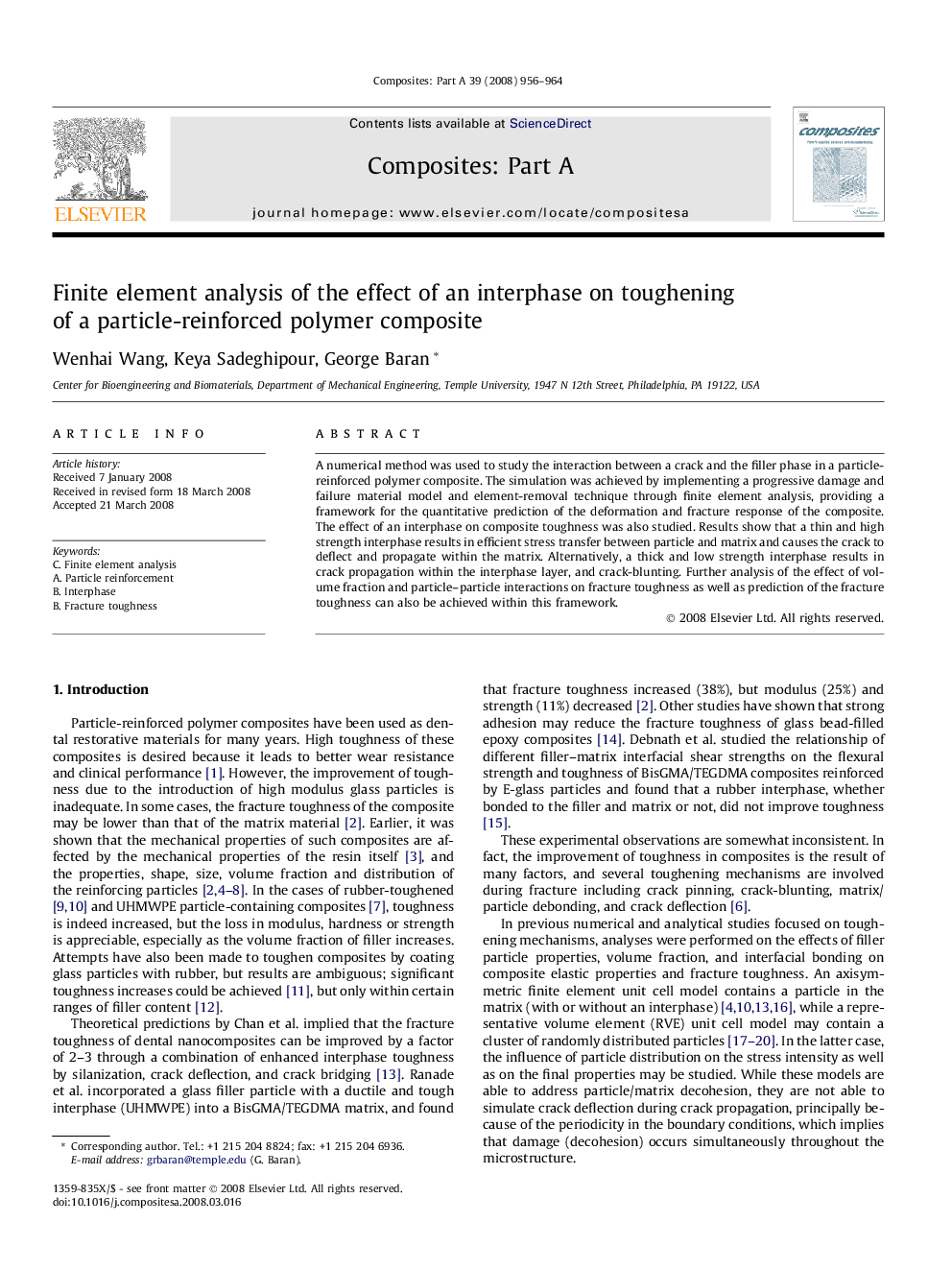| Article ID | Journal | Published Year | Pages | File Type |
|---|---|---|---|---|
| 1467544 | Composites Part A: Applied Science and Manufacturing | 2008 | 9 Pages |
A numerical method was used to study the interaction between a crack and the filler phase in a particle-reinforced polymer composite. The simulation was achieved by implementing a progressive damage and failure material model and element-removal technique through finite element analysis, providing a framework for the quantitative prediction of the deformation and fracture response of the composite. The effect of an interphase on composite toughness was also studied. Results show that a thin and high strength interphase results in efficient stress transfer between particle and matrix and causes the crack to deflect and propagate within the matrix. Alternatively, a thick and low strength interphase results in crack propagation within the interphase layer, and crack-blunting. Further analysis of the effect of volume fraction and particle–particle interactions on fracture toughness as well as prediction of the fracture toughness can also be achieved within this framework.
